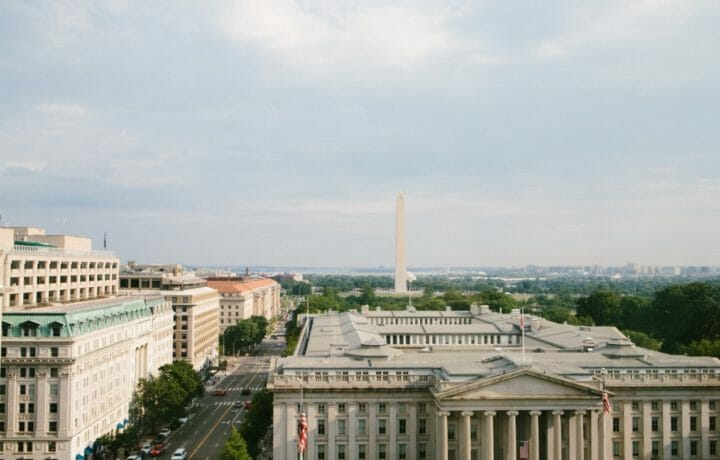The act of filing a Freedom of Information Act (FOIA) request seems so official and vaguely provocative that it can be intimidating at first. Let’s be honest—unless you’re the director of national intelligence, it is pretty weird to issue a demand for paperwork from the CIA, and weirder still that the CIA will actually respond.
HISTORY
The act was first signed into law in 1966 by President Lyndon Johnson, allowing people to petition federal agencies to release archived documents. If the agency feels the requested document falls into any one of nine narrowly defined exemptions, it will issue an “adverse response,” which is a four-syllable-phrase for “no.” (Petitioners can appeal such denials, first within the agency itself, and then in federal court.) Otherwise, the agency will make copies of the documents or media and send them to you by email or the postal service. There can sometimes be an administrative fee attached to the work, though generally speaking, the first two hours of search time and first 100 copies are on the house. You are not charged to make an initial request, and will not be charged without first being notified. Fees can also be appealed if the documents will contribute to the public’s understanding of government operations.
Every president likes to tinker with FOIA (pronounced FOY-ya) provisions. Nixon strengthened it. Reagan gutted it. Clinton revitalized it. Bush weakened it. Two years ago, President Obama attempted to rewrite FOIA so as to allow federal agencies to outright lie about the existence of documents, which would have essentially obliterated FOIA forever. (The administration buckled when Congress balked.) And of course there’s always been the “Glomar response,” so named for the CIA ship, whereby an agency—typically the CIA—can argue that even acknowledging a request would require them to confirm or deny the existence of a document, and thus harm national security. But at least the agency is dignifying the request with legalese.
Presently, FOIA is still around, and can be a powerful check against the federal government by the average citizen. Watchdogs at Cryptome, Government Attic, and the Federation of American Scientists do a heroic job every day at chipping away at the wall of government secrets, and posting their findings for review.
WHY YOU NEED TO KNOW
Why do you need to know how to file a FOIA request? In part because, as we’ve seen in recent weeks, secrets tend to corrode the state. You can play some small part in keeping the system honest. But there are also reasons in your direct self-interest. If you’re a student, the government is basically one giant filing cabinet filled with incredible research material. If you’re a professional and were denied a security clearance, you’re not necessarily going to get a reason as to why. FOIA can help. Likewise, if you were granted a clearance, and simply want to know what the background investigation turned up, you can file a FOIA request. (Pages 10 and 11 of this PDF document have precise instructions on how to request a copy of your clearance investigation.)
So what are the rules? If you’re going to request information from the government, everybody wins if you do a little homework in advance. Sending a letter to the FBI asking for everything they know about the conspiracy to kill JFK isn’t going to result in any new files, and will simply delay reasonable requests waiting in the queue. (Presently, the FOIA backlog is somewhere between 70-80,000 documents.) Federal agencies have online FOIA “reading rooms” where they list documents that have already been made publicly available. (For example, here is the reading room for the Food and Drug Administration.) Check the agency you’re interested in before filing a request. If the document you want isn’t in the public archive, take a good look at the documents related to what you want. Very often, you’ll find direct references in them to what you are looking for. Use this information to compose a more specific FOIA request. (e.g. “In the 19 July 1987 U.S. Air Force memorandum entitled WHERE THE UFOS ARE HIDDEN, there is a reference to a document numbered 10-90210 and titled WHERE WE DO THE AUTOPSIES. Please send me that document.”)
K.I.S.S
A short and specific request will yield positive results.
Here’s the thing: the men and women who work the FOIA desks of federal agencies are diligent and helpful, and will take your request seriously. Over the years, I’ve submitted innumerable requests for documents and media, and have more than once received phone calls from friendly FOIA officers offering to help me refine my search, or directing me toward more promising avenues of inquiry. You will be kept in the loop every step of the process as your request bounces from office to office until the material is found and released, found and withheld, or just plain lost. (Depending on your area of research, sometimes really old boxes of innocuous material are just destroyed for lack of public interest.)
In some cases, your letter is going to have the name and contact information of the FOIA officer handling your request. Don’t annoy these people, but don’t be afraid to check in on extremely delayed material, or to offer clarification on earlier requests. The point is: be courteous and professional. And keep in mind that, while you will get an initial response within 20 days, it may take months before you get the material you’ve requested.
The National Security Archive is a great place to start if you’re interested in submitting a FOIA request. They even have sample letters to get you going. At some point you’ve probably stood around the water cooler with coworkers, and someone complained that the government isn’t telling them everything. Using FOIA, you can respond by asking, “Well, have you tried asking them?”




